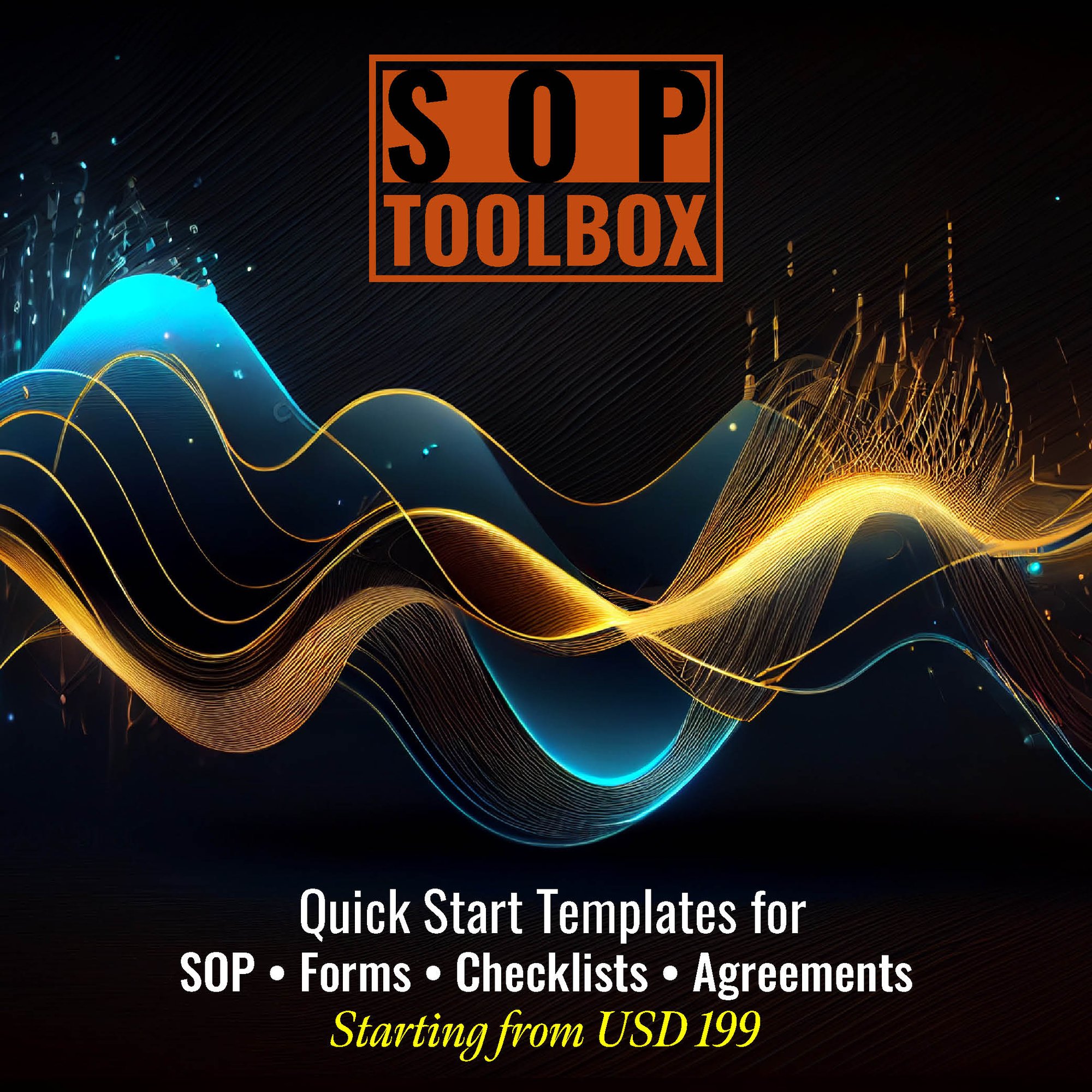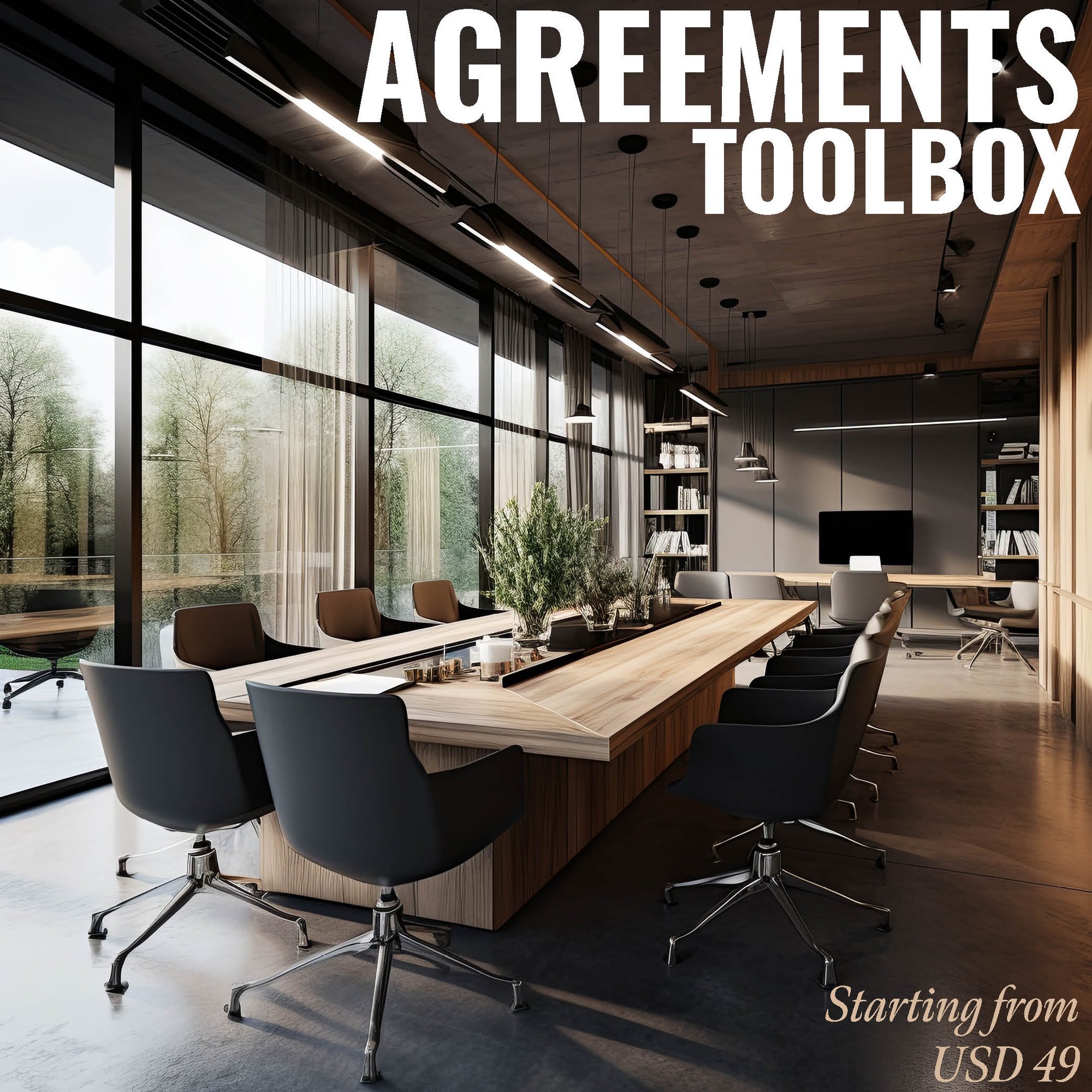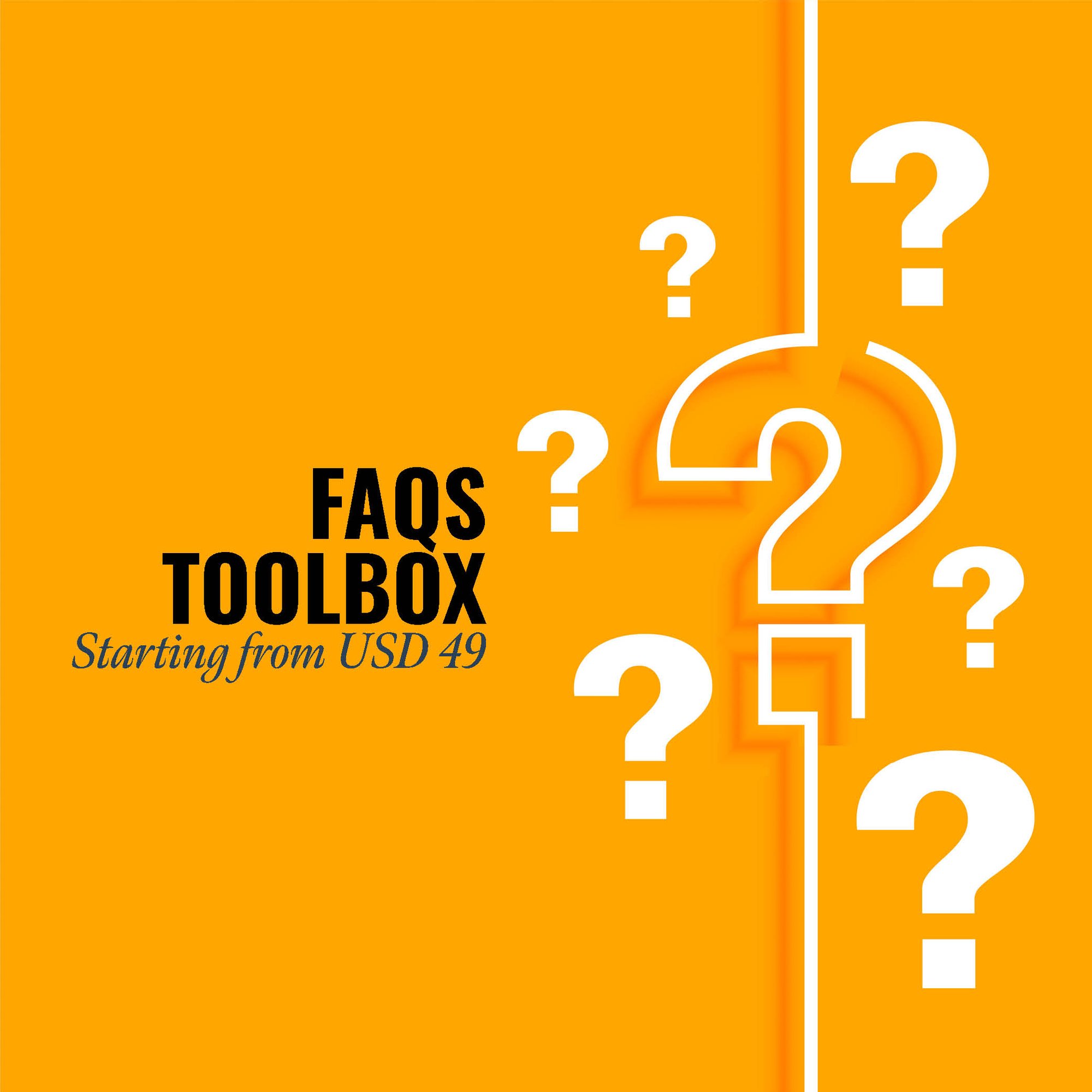An "SOP Manual for Natural Gas Distribution" is highly relevant in the energy industry for several compelling reasons:
-
Safety: Safety is paramount in natural gas distribution. The manual outlines critical safety protocols, ensuring that employees and the public are protected from the potential hazards associated with natural gas.
-
Regulatory Compliance: The energy sector is heavily regulated, and compliance with these regulations is essential to avoid legal issues and financial penalties. The manual helps ensure adherence to industry standards and government regulations.
-
Operational Efficiency: SOPs streamline daily operations, reducing errors, and ensuring the efficient distribution of natural gas. This enhances resource utilization and minimizes costs.
-
Environmental Responsibility: The manual may incorporate guidelines for reducing the environmental impact of natural gas distribution, aligning with sustainability and corporate social responsibility goals.
-
Emergency Response: It defines clear procedures for responding to gas leaks, pipeline failures, and other emergencies, helping minimize risks and disruptions.
-
Customer Service: By ensuring the safe and reliable distribution of natural gas, the manual contributes to high levels of customer satisfaction, which is crucial in maintaining public trust.
-
Workforce Training: It serves as a valuable resource for training and onboarding employees, ensuring they are well-prepared to handle the specific challenges of natural gas distribution.
In conclusion, an "SOP Manual for Natural Gas Distribution" is relevant for ensuring safety, compliance, efficiency, environmental responsibility, emergency response, customer service, and workforce training in the natural gas distribution industry. It plays a critical role in maintaining the integrity of the natural gas supply and the safety of the public and employees.
CLICK HERE to download the List of SOPs Document in PDF format. Please share this document with your clients, colleagues and senior officers.
Top 50 SOPs for Standard Operating Procedures (SOPs) for Natural Gas Distribution
SOP-751-001: Standard Operating Procedure for Emergency Response Planning
SOP-751-002: Standard Operating Procedure for Gas Leak Detection
SOP-751-003: Standard Operating Procedure for Pipeline Integrity Assessment
SOP-751-004: Standard Operating Procedure for Gas Meter Installation
SOP-751-005: Standard Operating Procedure for Pressure Regulation and Control
SOP-751-006: Standard Operating Procedure for Pipeline Construction and Maintenance
SOP-751-007: Standard Operating Procedure for Odorization of Natural Gas
SOP-751-008: Standard Operating Procedure for Cathodic Protection
SOP-751-009: Standard Operating Procedure for Gas Quality Monitoring
SOP-751-010: Standard Operating Procedure for Emergency Shutdown Procedures
SOP-751-011: Standard Operating Procedure for Gas Storage Operations
SOP-751-012: Standard Operating Procedure for Gas Distribution Network Expansion
SOP-751-013: Standard Operating Procedure for Right-of-Way Management
SOP-751-014: Standard Operating Procedure for Excavation and Trenching
SOP-751-015: Standard Operating Procedure for Gas Compression Stations
SOP-751-016: Standard Operating Procedure for Meter Reading and Billing
SOP-751-017: Standard Operating Procedure for Gas Pressure Testing
SOP-751-018: Standard Operating Procedure for Gas Venting and Flaring
SOP-751-019: Standard Operating Procedure for Customer Service and Communication
SOP-751-020: Standard Operating Procedure for Incident Reporting and Investigation
SOP-751-021: Standard Operating Procedure for Gas Pipeline Abandonment
SOP-751-022: Standard Operating Procedure for Gas Odor Complaint Response
SOP-751-023: Standard Operating Procedure for Gas Valve Inspection and Maintenance
SOP-751-024: Standard Operating Procedure for Gas Meter Calibration
SOP-751-025: Standard Operating Procedure for Gas Distribution Mapping and Records
SOP-751-026: Standard Operating Procedure for Gas System Monitoring and Control
SOP-751-027: Standard Operating Procedure for Environmental Compliance
SOP-751-028: Standard Operating Procedure for Gas System Security
SOP-751-029: Standard Operating Procedure for Gas System Emergency Shutdown
SOP-751-030: Standard Operating Procedure for Gas Regulator Inspection and Maintenance
SOP-751-031: Standard Operating Procedure for Gas Pressure Monitoring
SOP-751-032: Standard Operating Procedure for Gas Pipeline Pigging
SOP-751-033: Standard Operating Procedure for Gas Valve Operation and Maintenance
SOP-751-034: Standard Operating Procedure for Gas Meter Removal and Replacement
SOP-751-035: Standard Operating Procedure for Gas Distribution System Training
SOP-751-036: Standard Operating Procedure for Gas System Automation
SOP-751-037: Standard Operating Procedure for Gas Pipeline Coating and Corrosion Protection
SOP-751-038: Standard Operating Procedure for Gas Pipeline Inspection
SOP-751-039: Standard Operating Procedure for Gas Meter Reading Validation
SOP-751-040: Standard Operating Procedure for Gas System Performance Monitoring
SOP-751-042: Standard Operating Procedure for Gas System Data Management
SOP-751-043: Standard Operating Procedure for Gas Meter Data Analysis
SOP-751-044: Standard Operating Procedure for Gas Leak Repair
SOP-751-045: Standard Operating Procedure for Gas System Decommissioning
SOP-751-046: Standard Operating Procedure for Gas System Rehabilitation
SOP-751-047: Standard Operating Procedure for Gas Pipeline Routing and Siting
SOP-751-048: Standard Operating Procedure for Gas Meter Inspection
SOP-751-049: Standard Operating Procedure for Gas System Performance Evaluation
SOP-751-050: Standard Operating Procedure for Gas Distribution System Optimization
SOP ToolBox: If you are reading these lines, I am sure you are looking for Standard Operating Procedure guidelines or SOPs itself. In both the cases, searching in internet will not be yielding any great help. Because no company shares their SOP Development Process and certainly don’t share their SOP Documents. The best way to develop an SOP is creating one for yourself. At Fhyzics, we write SOPs day-in and day-out for companies across the globe including some of the Fortune 500 organisations. Our charge ranges from USD 5000 to USD 50000 depending upon the number of processes to be covered. Certainly, this is not affordable to small and mid-size organisations. Hence, we decided to create this SOP ToolBox to disseminate our 8-Step SOP Development Life-Cycle and best practices at an unbelievably low price.
I always say, writing an SOP is somewhere between art and science. So far you may be clueless on where to start and how to progress on an SOP? This will not be the case after you diligently go through this SOP ToolBox. We have summarised all our secrets here to get you started and to deliver a stunning SOP to your management.
-
Blue gas, carbureted, distribution
-
Coke oven gas distribution
-
Distribution of manufactured gas
-
Distribution of natural gas
-
Gas, manufactured, distribution
-
Gas, mixed natural and manufactured, distribution
-
Gas, natural, distribution
-
Liquefied petroleum gas (LPG) distribution through mains
-
Manufactured gas distribution
-
Natural gas brokers
-
Natural gas distribution systems
-
Natural gas distribution with transmission
-
Natural gas marketers
1. Standard Operating Procedures (SOP) Manual for Accounts Department
2. Standard Operating Procedures (SOP) Manual for Finance Department
3. Standard Operating Procedures (SOP) Manual for Customer Service
4. Standard Operating Procedures (SOP) Manual for CRM Department
5. Standard Operating Procedures (SOP) Manual for Credit Department
6. Standard Operating Procedures (SOP) Manual for Treasury Department
7. Standard Operating Procedures (SOP) Manual for Human Resources (HR) Department
8. Standard Operating Procedures (SOP) Manual for Training Department
9. Standard Operating Procedures (SOP) Manual for Learning & Development Department
10. Standard Operating Procedures (SOP) Manual for Administration Department
11. Standard Operating Procedures (SOP) Manual for Front Office
12. Standard Operating Procedures (SOP) Manual for House Keeping
13. Standard Operating Procedures (SOP) Manual for Safety Department
14. Standard Operating Procedures (SOP) Manual for Security Department
15. Standard Operating Procedures (SOP) Manual for Facilities Management Department
16. Standard Operating Procedures (SOP) Manual for Vigilance Department
17. Standard Operating Procedures (SOP) Manual for Legal Department
18. Standard Operating Procedures (SOP) Manual for Information Technology (IT) Department
19. Standard Operating Procedures (SOP) Manual for Sales & Marketing Department
20. Standard Operating Procedures (SOP) Manual for Design & Engineering
21. Standard Operating Procedures (SOP) Manual for Procurement Department
22. Standard Operating Procedures (SOP) Manual for Production
23. Standard Operating Procedures (SOP) Manual for SRM Department
24. Standard Operating Procedures (SOP) Manual for Supply Chain Department
25. Standard Operating Procedures (SOP) Manual for Warehouse
26. Standard Operating Procedures (SOP) Manual for New Product Development Department
27. Standard Operating Procedures (SOP) Manual for Research and Development
28. Standard Operating Procedures (SOP) Manual for Quality Department
29. Standard Operating Procedures (SOP) Manual for Calibration Department
30. Standard Operating Procedures (SOP) Manual for Maintenance Department
- Exploration
- Extraction
- Production and fracking fluid recycling
- Construction and preparation of pipeline or other medium
- Transport
- Storage
- Quality Control
- Distribution
- Marketing
- Flaring Systems
- Turbine Expanders
- Associated Gas Generators
- Standalone power supply units (OTP) (associated gas recovery)
- Dust Collectors
- Oil and Gas Custody Metering System
- Oil desalting plants
- Gas Separators
- Four-phase high pressure raw oil separators
- Compact units for oil separation
- Amine plants
- Passive dehydration system
- Fuel-gas conditioning
- H2s removal
- Bullet tanks
- Glycol dehydrators
- Forced air coolers
- Ambient cooling systems
- Module-Type Formation Pressure Maintenance Plant
- Mobile Nitrogen Production System
- Mobile Gas Pumping System
- Natural Gas Stationary Compressor Systems
- Separators
- Mobile diesel heaters
- Gas production and transport equipment
- Drilling Equipment
- Equipment for offshore platforms
- Heat and power systems with external combustion engines
- All Oil & Gas Standards| ASTM International
https://www.astm.org/industry/all-oil-and-gas-standards.html - ISO 75.020| International Organization for Standardization
https://www.iso.org/obp/ui/#iso:std:iso:35103:ed-1:v1:en - ISO 13623:2009| International Organization for Standardization
https://www.iso.org/standard/44497.html#:~:text=ISO%2013623%3A2009%20specifies%20requirements,petroleum%20and%20natural%20gas%20industries.&text=A%20figure%20shows%20the%20extent,covered%20by%20ISO%2013623%3A2009 - ISO 19345-2:2019(en)| International Organization for Standardization
https://www.iso.org/obp/ui/#iso:std:iso:19345:-2:ed-1:v1:en - International Standards|International Association of Oil & Gas Producers (IOGP)
https://www.iogp.org/international-standards/
- Canadian Natural Resources| Calgary, Canada|
https://www.cnrl.com/ - ConocoPhillips| Texas, United States|
http://www.conocophillips.com/ - Equinor| Stavanger, Norway|
https://www.equinor.com/en.html - Total S.A.| Paris, France|
http://www.total.com/ - Alagasco|Alabama, United States|
https://www.spireenergy.com/ - Gazprom| Moscow, Russia|
http://www.gazprom.com/ - ExxonMobil| Texas, United States|
http://corporate.exxonmobil.com/ - Chevron Corporation| California, United States|
https://www.chevron.com/ - Royal Dutch Shell| The Hague, Netherlands|
http://www.shell.com/ - China National Petroleum Corporation| Beijing, China|
https://www.cnpc.com.cn/en/
-
Hydrocarbon Processing Magazine
-
Pipeline Oil and Gas Magazine
-
World Oil Magazine
-
Oil & Gas Journal
-
International Journal of Oil, Gas and Coal Technology (IJOGCT)| Inderscience
-
Gas Processing Magazinehttp://www.gasprocessingnews.com/gas-processing-magazine.aspx
Research By : Udhay Sankar
Please click here to review the SOP Templates’ Terms & Conditions.
Keywords: sop, manual, policy, sop meaning, sop full form, standard operating procedure, full sop, user manual, sop is, user guide, instruction manual, owners manual, sample sop, operators manual, sop example,standard operating procedure examples, abbreviation sop, standard operating procedure sample, milk sop, sop document, sop process,m manual, operating procedures, operating process, sop meaning in hindi, standard procedure, sop standard operating procedure, sop top, sop writing, standard operating procedures manual, sop meaning in english, sample sop for mba, standard operating procedures examples in office, product manual, sample sop for ms, maintenance manual, sop security, sop in research, sop in business, whats sop, standard of operation, sop set, sop procedure, sop marketing,sop training, sop hotel, sop, sop meaning business, sop form, sba sop,sop software, help manual, sop it, army sop, company sop, sop sap, o m manual, standard operating procedure examples for small business, shop manual, sop manual, sop meaning in business, purpose of standard operating procedures, sop full meaning, standard operating procedure meaning, sop military, sop standard, sop meaning medical, hr sop, sop production, purpose of sop, sop management, warehouse sop, sales sop, sop pharma, sop manufacturing, sop creation, sop laboratory, ms sop, sop full form in hindi, sop front office, sop customer service, sop online, gmp sop, sop purchasing, sop pharmacy, sop safety, sop for project management,sample sop for australian student visa, sop meaning in tamil, sop system, best sop, sop up, sop in english, sop for mechanical engineering, sop for university,sop in malay, sop lab, sop for business analytics, sop model, sop in pharmacy, developing sops, standard operating procedure examples manufacturing, sop full form in retail,sop full form in medical, sop engineering, sop application, writing standard operating procedures, procurement sop, sop maintenance,standard operating procedure nhs, sop clinical trial, sop operations,sop in construction, operating procedures manual, standard operating procedure ppt, standard procedure meaning, sop ppt, a sop, sop document meaning, sop def, sop full form in safety, sop quality control, sop for college, sop quality, sop service, types of sop, sop for engineering management, sop document sample, benefit of sop, preparing sop, standard operating procedure in hindi, sop for visa, sop compliance, sop protocol, sop aviation, sop meaning in chat, standard operating process, sop meaning military, sop for business management, standard operating procedure software, sop list, sop medical, sop logistics, sop project, sop for it department, sop call center, standard work procedures, sba sop 50 10, sop meaning in logistics, standard operating procedure laboratory, test sop, sop sample for ms, drafting sop, sops meaning in tamil, sops meaning in telugu, sop automotive, standard operating system, sop cafe, sop slideshare, sop ap, sop bank, sop in retail, creating standard operating procedures, sop admin, document control sop, pharmaceutical sop,sop in pharmaceutical industry, statement of purpose harvard, sop examples for ms, quality assurance sop, sop in clinical research, nursing sop, sop for transportation, sop policies, sops are specific to a process, sop in hindi, standard operating procedure for warehouse picking, master sop, list of sop for pharma, pharmaceutical sop examples, types of standard operating procedures, retail sop, sample sop for ms in mechanical engineering, standard operating protocol,sop supply chain, system operating procedure, sop rules, example of sop in research, sop in food industry, sop for international business management, sop for hospitality management, sop for hr department, army sop example, sop standard operating, office sop, hr standard operating procedures, preventive maintenance sop, sop for purchase department, human resources sop, fire department sops, information technology sop, operating procedure example, administration sop,sop for retail store, indian sop, construction management sop, sop hotel front office, example sop document, standard and procedures,working sop, sop for maintenance department, sop hrd department,sop full form in hotel industry, sop full, sop for human resource management, laboratory sop examples, standard operating procedure for quality control, sop for ms in mechanical engineering, sop meaning army, security standard operating procedures, sop machine, sample sop for internship, sop for hotel management, sample sop for masters, qa sop, developing standard operating procedures, standard operating procedure document, product recall sop, marketing statement of purpose, it standard operating procedures, equipment sop, sop purpose example, sop shipping, sop for sales and marketing,converting pos to sop, workshop sop, standard operating procedure manufacturing, digital marketing standard operating procedures, following standard operating procedures, sop ki full form, sop for nursing procedures, an sop, purchase sop for manufacturing company, sop a, statement of purpose for mba marketing, full meaning of sop, sop for research internship, research sop sample,vendor qualification sop, sop purchasing and receiving, sop meaning in visa, sop for admission, standard operating procedure medical office, sop in industry, sop sales marketing, navy sop, project management standard operating procedures, sop it support, standard operating manual, security operating procedures, statement of purpose for international business, procurement standard operating procedures, communication sop, sop full form in pharma, minimum sop, sop health and safety, product sop, sop for marketing department, sop in medical terms, sales standard operating procedure, sop purchase order, department sop, customer service standard operating procedures, clinical sop, marketing standard operating procedure, sop standard operating procedure example, construction standard operating procedures, standard of operations procedures manual sample, sop for facility management, sop full form in education, standard operating procedure in food industry, visa sop,sop for business administration, company sop meaning, sop work, sop operating procedure, sop for summer internship in engineering sample, general administration sop, sop for administrative duties.
Our SOP Templates’ clients are from the following States and Countries:
Alabama, Alaska, Arizona, Arkansas, California, Colorado, Connecticut, Delaware, Florida, Georgia, Hawaii, Idaho, Illinois, Indiana, Iowa, Kansas, Kentucky, Louisiana, Maine, Maryland, Massachusetts, Michigan, Minnesota, Mississippi, Missouri, Montana, Nebraska, Nevada, New Hampshire, New Jersey, New Mexico, New York, North Carolina, North Dakota, Ohio, Oklahoma, Oregon, Pennsylvania, Rhode Island, South Carolina, South Dakota, Tennessee, Texas, Utah, Vermont, Virginia, Washington, West Virginia, Wisconsin, Wyoming.
Afghanistan, Albania, Algeria, Andorra, Angola, Antigua and Barbuda, Argentina, Armenia, Australia, Austria, Azerbaijan, Bahamas, Bahrain, Bangladesh, Barbados, Belarus, Belgium, Belize, Benin, Bhutan, Bolivia, Bosnia and Herzegovina, Botswana, Brazil, Brunei Darussalam, Bulgaria, Burkina Faso, Burundi, Cabo Verde, Cambodia, Cameroon, Canada, Central African Republic, Chad, Chile, China, Colombia, Comoros, Congo (Republic of the), Costa Rica, Croatia, Cuba, Cyprus, Czech Republic (Czechia), Democratic People’s Republic of Korea (North Korea), Democratic Republic of the Congo, Denmark, Djibouti, Dominica, Dominican Republic, Ecuador, Egypt, El Salvador, Equatorial Guinea, Eritrea, Estonia, Eswatini, Ethiopia, Fiji, Finland, France, Gabon, Gambia, Georgia, Germany, Ghana, Greece, Grenada, Guatemala, Guinea, Guinea-Bissau, Guyana, Haiti, Honduras, Hungary, Iceland, India, Indonesia, Iran, Iraq, Ireland, Israel, Italy, Jamaica, Japan, Jordan, Kazakhstan,Kenya, Kiribati, Kuwait, Kyrgyzstan, Lao People’s Democratic Republic (Laos), Latvia, Lebanon, Lesotho, Liberia, Libya, Liechtenstein, Lithuania, Luxembourg, Madagascar, Malawi, Malaysia, Maldives, Mali, Malta, Marshall Islands, Mauritania, Mauritius, Mexico, Micronesia (Federated States of), Moldova, Monaco, Mongolia, Montenegro, Morocco, Mozambique, Myanmar (Burma), Namibia, Nauru, Nepal, Netherlands, New Zealand, Nicaragua, Niger, Nigeria, North Macedonia (formerly Macedonia), Norway, Oman, Pakistan, Palau, Panama, Papua New Guinea, Paraguay, Peru, Philippines, Poland, Portugal, Qatar, Republic of Korea (South Korea), Republic of the Congo, Romania, Russian Federation (Russia), Rwanda, Saint Kitts and Nevis, Saint Lucia, Saint Vincent and the Grenadines, Samoa, San Marino, Sao Tome and Principe, Saudi Arabia, Senegal, Serbia, Seychelles, Sierra Leone, Singapore, Slovakia, Slovenia, Solomon Islands, Somalia, South Africa, South Sudan, Spain, Sri Lanka, Sudan, Suriname, Sweden, Switzerland, Syrian Arab Republic (Syria), Tajikistan, Thailand, Timor-Leste, Togo, Tonga, Trinidad and Tobago, Tunisia, Turkey, Turkmenistan, Tuvalu, Uganda, Ukraine, United Arab Emirates, United Kingdom of Great Britain and Northern Ireland, United Republic of Tanzania, United States of America, Uruguay, Uzbekistan, Vanuatu, Venezuela, Viet Nam, Yemen, Zambia, Zimbabwe.
Fhyzics supports organisations in developing the following documentations:
Standard Operating Procedures (SOPs), Work Instructions, Policies and Procedures, Process Flow Diagrams, Job Descriptions, Training Manuals, Employee Handbooks, Compliance Guidelines, Quality Assurance Manuals, Health and Safety Procedures, Risk Management Plans, Business Continuity Plans, Internal Audit Procedures, Incident Reporting Forms, Performance Management Guidelines, Change Management Procedures, Vendor Management Guidelines, Customer Service Protocols, IT Security Policies, IT Support Documentation, Disaster Recovery Plans, Operational Checklists, Data Management Policies, Confidentiality Agreements, Non-Disclosure Agreements, Employee Onboarding Procedures, Employee Exit Procedures, Performance Appraisal Forms, Employee Code of Conduct, Conflict Resolution Procedures, Product Development SOPs, Supply Chain Management Guidelines, Procurement Guidelines, Inventory Management SOPs, Shipping and Receiving Procedures, Production Scheduling SOPs, Maintenance Procedures, Equipment Calibration Documents, Environmental Compliance Documentation, Sustainability Policies, Customer Feedback Forms, Marketing Strategies, Advertising Guidelines, Brand Management Guidelines, Product Packaging SOPs, Laboratory Testing Procedures, Regulatory Compliance Documentation, Tax and Accounting Procedures, Contract Management Procedures, Legal Compliance Guidelines, Financial Reporting Procedures, Budgeting Procedures, Internal Control Procedures, Fraud Prevention Policies, Asset Management Guidelines, Purchase Order Procedures, Sales and Distribution Guidelines, Client Contracts, Customer Return Policies, Internal Communication Protocols, Vendor Evaluation Forms, Product Safety Standards, Workplace Health and Safety Standards, Public Relations Procedures, Social Media Management Guidelines, Crisis Management Plans, Employee Grievance Procedures, Privacy and Data Protection Policies, Digital Transformation Guidelines, Innovation Management Procedures, Continuous Improvement Guidelines, Strategic Planning Documents, Corporate Social Responsibility (CSR) Guidelines, Audit Trails and Records, Employee Training and Development Records, Succession Planning Documents, Talent Acquisition Procedures, Team Collaboration Protocols, Employee Benefit Plans, Workplace Diversity Guidelines, Time and Attendance Tracking, Payroll Procedures, Employee Leave Policies, Conflict of Interest Policy, Emergency Response Procedures, Environmental Impact Assessment Procedures, Transportation and Logistics Procedures, Inventory Control Forms, Warehouse Management Guidelines, Product Lifecycle Management SOPs, Customer Satisfaction Surveys, Third-Party Risk Assessment Guidelines, Technology Adoption Policies, Software Licensing Guidelines, Security Incident Response Procedures, Supply Chain Risk Management Policies, Product Recall Procedures, Food Safety Guidelines, Employee Wellness Programs, Workplace Ergonomics Guidelines.






.jpg?width=645&height=337&name=Standard%20Operating%20Procedure%20-%20SOP%20ToolBox%20(1).jpg)











